BAE Systems has been awarded a new 15-year contract for the supply of munitions to the British armed forces.
The contract, worth £2.4bn, will sustain approximately 4,000 jobs across the UK say BAE.
“This new agreement, which will supersede the current contract due to conclude at the end of 2022, will guarantee the delivery of munitions products and engineering support to the UK Armed Forces. BAE Systems directly employs 1,260 people who are involved in either munitions manufacturing or test and evaluation at five sites across the UK; Glascoed in Monmouthshire, Radway Green in Cheshire, Washington in Tyne & Wear, Bishopton near Glasgow, and Ridsdale in Northumberland.”
Accirding to the firm, it is anticipated that the contract will also help sustain a further 1,500 jobs in the UK supply chain and support a further 1,300 jobs induced by consumer spending in economies local to sites.
“The agreement enables BAE Systems to invest £70 million on the refurbishment and upgrade of manufacturing lines, with 75% of this value being invested by 2026. The Company will also spend up to £350m with UK-based companies on raw materials and machine components.”
Charles Woodburn, Chief Executive, BAE Systems, said:
“This contract secures the future of a highly technical and critical industry which supports thousands of manufacturing jobs in several areas throughout the UK. By investing in new technology and skills to further develop our expertise, we can continue to deliver essential sovereign capability to the Armed Forces at competitive prices.”
Defence Minister Jeremy Quin said:
“This vital multi-billion pound contract will provide our service men and women with fire power on the front line for years to come whilst investing in British industry, British jobs and British infrastructure. Defence underpins hundreds of thousands of jobs across all four corners of the nation, and ongoing investment is crucial as we work together to build back better and stronger from the Covid-19 pandemic.”
The contract, called the ‘Next Generation Munitions Solution’ (NGMS), is due to commence in January 2023 and will succeed the current ‘Munitions Acquisition, the Supply Solution’ (MASS) contract, which commenced in 2008.


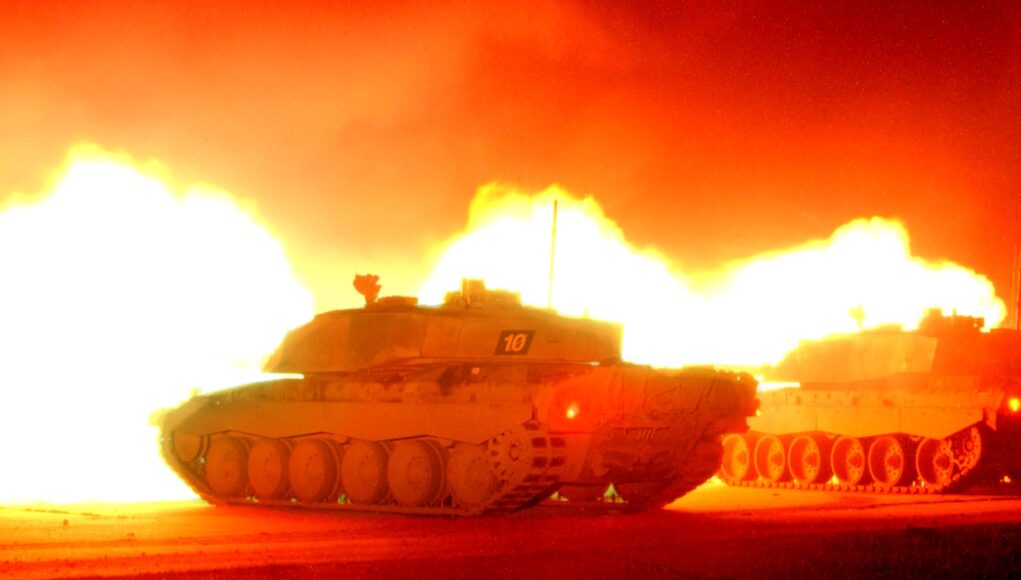

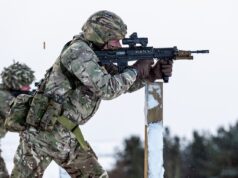
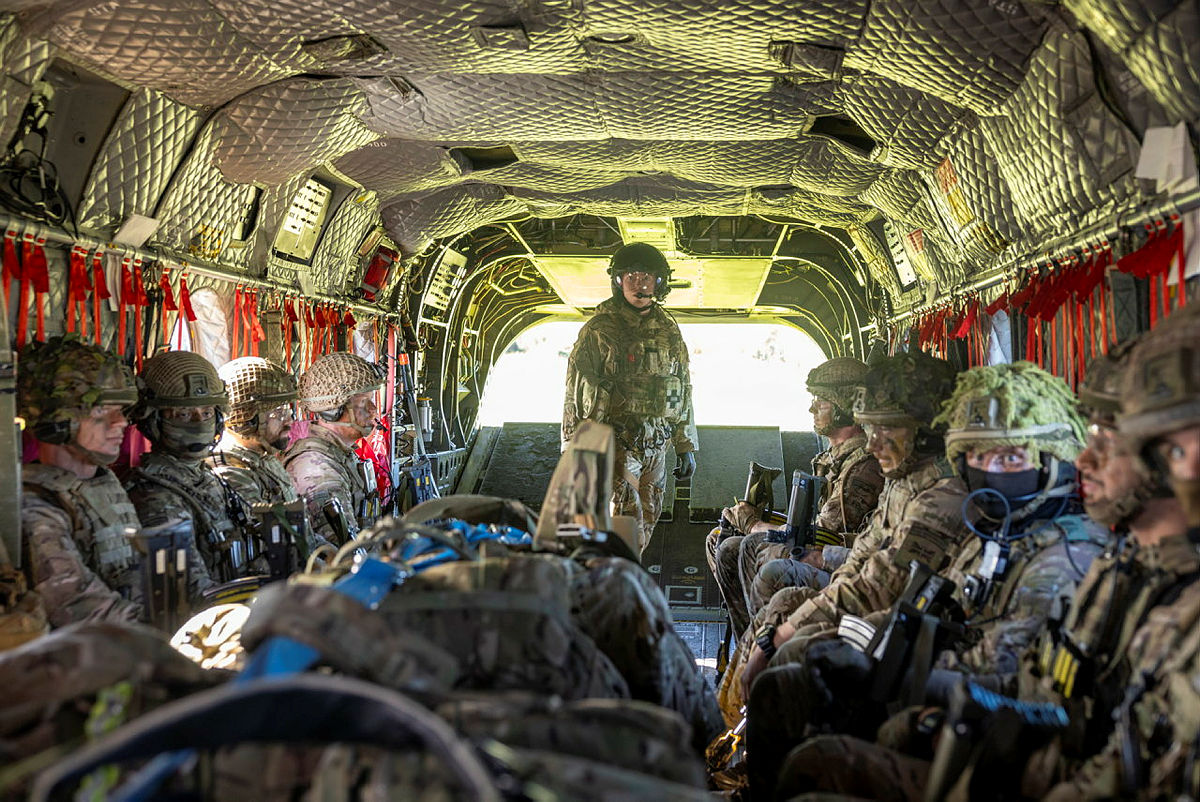
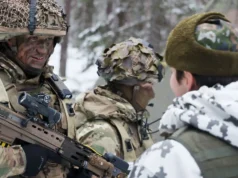


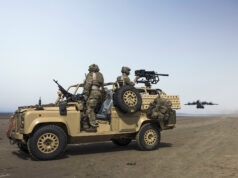

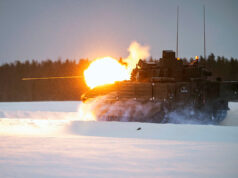


£2.4Bn over 15yrs is £160M/yr – and that’s across all the Armed Forces. Is that really all that much when you consider a single Meteor missile by itself is £1M?
Think it will be small arms not big ticketstuff?
We could only get 2400 Meteors for that… or 100 SM-3s.
Just checked it’s small arms,mortars and artillery shells
Yes, bullets, shells, for the army primarily.
This contract is for munitions from BAE.
Meteor made by MBDA, different company, different contract. Not to mention all the other munitions not supplied by BAE 🤷♂️
BAEs don’t make Meteor, this will be for smaller easier to produce items, that are idiot-proof .
Is this article a follow on to last years (Nov 2020) contract award?
On a semi related note, I wonder what the plan is for arming the t23, considering tomahawk has stopped production and we know from recent experience that our supply of them is extremely low, around 50 in total, and that is before the ones fired since the last order.
If you’re referring to Type 23 I’m assuming you’re talking about Harpoon as opposed to Tomahawk. If you are talking about Harpoon, the plan is to use an interim canister-launched ISSGW (of which 5 sets will be procured) on the Type 23s. Once the Type 31 comes in to service, I’m guessing the ISSGW will be transferred to them, since I doubt the quantity is a coincidence, while Type 26 will receive the more capable, VLS launched FC/ASW.
Hi Steve, I think you mean the T26. Yes they’ll need to fill the 24 Mk41 silos with something. The RAN here is putting the Tomahawk on their Hobart AAW destroyers so maybe the RN might be considering these as well for the T26 as well as the USN getting a top up. Not sure if the FC/ASW can or will be brought forward and we are still having to wait on the news for the choice of the Interim ASM.
Yeah typo, t26. If the US are getting a top up we need to get in fast and piggy back on the order. Although my guess is we will just spread the small number we have across more platforms to look good and therefore not actually increase the capability to fire them.
If MoD cancel FC/ASW RN are screwed, full stop. It’s planned to have land attack capability so that would also replace tomahawk.
Yeah that project really needs to deliver a family of missiles. A lowish cost long range sub sonic TLAM to be launched from ships and the air and a hypersonic antiship missile.
For land targets we need range and numbers air defence will only be an issue on a limited number of targets while naval ships are well equipped to combat anti ship missiles which why we need a hyper sonic option.
We have wasted a lot of time arguing over which one when it’s clear we need both.
Shouldn’t it be the other way around? I’ve heard a lot about issues with hypersonic missiles being that they are not very manoeuvrable due to their speed and hence losing track of the moving target for even a few seconds can mean the missiles angle will be quite far off by then. So shouldn’t the AShM be subsonic, low-observable with better loiter capabilities in case the target is lost while the land missile hypersonic since the target will never be moving?
MBDN are in the process of developing two options, a subsonic (favoured by the U.K.) and a hypersonic (favoured by France) one of these will be chosen and used by both parties
I believe the subsonic will be a smarter munition that follows the contours of the ground evading radar, while a hypersonic needs to fly high where the air is thinner using its speed not to be intercepted!
Im not sure what the range difference is between them if any
Tomahawk is still produced
ah ok, i thought i had read the production line had been closed, must be thinking of another missile.
Tomahawk has not stopped production, just stopped producing the Block IV version. This is the version the RN use from the SSNs. It is more than likely that the UKs Tomahawk land attack missile TLAMs will be replaced by the Block V version. This is because the USN are current moving from the Block IV version to the Block V. This is adds the ability to attack moving targets at sea.
In regards to an actual Tomahawk (TLAM) replacement.
There are three trains of thought within the USN. A new upgraded TLAM, a modified version of LRASM, or a new weapon system. The USN have launched the following programs:
1/ This includes an incremental development of existing surface to surface missiles such as TLAM, LRASM, NSM. But also includes the further development of SM-6 Block 1B.
2/ There have been proposals from a number of manufactures for a ship launched land attack missile to fulfil the NGLAW requirement. This is a list of those companies that have been linked to the program: Aerojet Rocketdyne, BAe, Ball Aerospace, Boeing, General Dynamics, Kratos, L3 Technologies, Leidos, Lockheed Martin, Northrop Grumman, Raytheon and Orbital ATK.
Again like most camps, they are split between a stealthy subsonic and super sonic plus missile. However, the USN have asked that the missile is both submarine and ship launched, along with a feasibility study of air launched with a date of testing by 2028. But one of the caveats is that it must have a range comparable or better to the existing TLAM.
3/ The OASuW is primarily focused on the incremental development of LRASM especially air launched. The missile is expected to be fielded in a similar time frame as NGLAW.
The LRASM is based on the USAF’s AGM-158B JASSM-ER. This has a published range around 500nmi (930km), compared to LRASM’s 300nmi (560km). The discrepancy in range is due to the smaller fuel volume, as space was required for the avionics. Lockheed Martin have said they could recover the range by making the warhead smaller and using the space for fuel. The LRASM is primarily an aircraft carried weapon. However, LM have successfully fired them from Mk41 VLS in a number of trials and are expecting to do submarine launched trials as well.
There is clearly a duplication in roles between NGLAW and OASuW when the target is within 500nmi as the LRASM can fulfil that requirement. Trying to duplicate or better the range of TLAM is a lot harder. Though a number of companies on the list have suggested a hypersonic glide vehicle for the NGLAW requirement.
Great Post. Keep in mind that LRASM was what came out of the OASuW program. The USN has since began the initial steps for OASuW Increment 2 which will compliment or even replace LRASM.
Yep, OASuW increment 1. Increment 2 is looking at LRASM version 1.1. There isn’t much to go on what the updates to 1.1. are, though the speculation is to reduce the warhead size, so more more fuel can be added. Though the USN are also pushing for the BAe RF detector that went onto the JSM, to be included as a modification for the NSM.
It is my understanding that OASuW Inc 2 is a totally new program and LRASM 1.1 is a software and hardware upgrade to LRASM to bridge the gap until OASuW Inc 2 comes online towards the end of the decade.
Yes, that’s what I read also. But I have also seen USN quotes saying LRSAM 1.1 will also be included in increment 2. I think this is because it can be used in a MK41 with just an additional booster strapped to it. But also Lockheed Martin are looking to include a sub-launched version. The issue it does have, is the range is pretty poor compared to the TLAM. Hence why they were also looking at reducing the warhead size so more fuel can be squeezed in.
What makes this really interesting for me is that it is all but certain that the USN navy has a classified anti ship missile either in development or already operational. There was some congressional testimony earlier this year where a USN official when questioned stated that the LRASM was the only new anti ship missile the USN has that he could discuss in an open forum.
Problem that makes the Block V less useful to a British sub is its branched into Land Attack and Maritime attack versions rather than being universal like Block IV was. Block Va has sensors to track moving targets while Block Vb has a two stage penetrating warhead for attacking hardened targets but omits the sensors.
US aren’t buying block V they are upgrading their existing ones to block V, so i assume we will do the same.
They are buying about 150 new Block V TLAMs. You are correct in that they are also upgrading the Block Ivs.
I would like to see .338 Lapua & .50 Browning ammo made in the UK.
Why?
Security of supply.
I remember when the MoD bought ammunition from India years ago. The quality was terrible and ‘backhanders’ were suspected. I believe much of it was scrapped.
I can remember using 9mm from India in my SMG, lots of stoppages. A Weapons Tiffy demo’d a wet blanket over a washing line (so two layers) stopping said rounds!
Indian 50 cal was rubbish. I am not sure what they used in the cartridges but it wasn’t propellant
I hope we gave the suppliers the bullet…
Yep, we had similar issues with Romanian bought 7.62 and 5.56 in Afghan. The propellent pressures was inconsistent, so the rounds went all over the place. This was replaced by stuff from the Czech Republic which was top notch.
Reports of the ammunition failing to cycle machines guns in Helmand and the MOD blaming troops for not cleaning weapons properly !
How much do bullets cost?
I assume we’ll get a rather hefty bulk purchase discount but it’s not something I can price check at my local Tesco.
I think the Chinese government charge the families of executed criminals about 10p.
Retail prices to UK license holders. New PPU (Serbian) ammo. 5.56 £65 per 100. 7.62 £82 per 100. 9mm £41 per 100. Governments will be buying in bulk & paying a fraction of that, a third maybe, if they haggle.
Not if BAE is the sole supplier. The government could purchase ammo at a fraction of the price from US suppliers.
Most of the commercial stuff in Europe seems to come from the Czech Republic.
Most American gun owners are moaning of an ammo shortage. Lots of Americans bought guns before Biden could ban them. So a lot of new American gun owners looking for ammo. Then Biden went & banned imported ammo from Russia, which hit AK & Makarov owners. So Americans will not want to see ammo exported.
Most retail Ammo in the UK is German, Serbian, Czech or Brazilian.
Used American CCI stinger .22 ammo before pistol ban, never had a faulty round !
Pity the propellant, caps and explosives are all sourced overseas.
Do we still have the facilities to produce our own NC?
No. All HE, primer and propellant manufactured overseas. First Chorley closed then Bridgewater in Somerset – after that, all imported.
I suppose the cost will also include all of the packaging for the Ammo as well. Lots of steel boxes full of foam and cardboard.
Just for fun… From my bulk ammo course
A single wooden pallet (that is not overpacked) can take 96000 rounds of 5.56 in H83 boxes of 800 rounds a box. That’s either loose in cardboard boxes or bandolier
For 7.62 I think it’s 48000 rounds. That’s H82 boxes, 4 to a pannier.
Oh, the nights must fly by…..
One week to go on the current ships 1month maintenance period , another starting in 7 days, then another 7 days later and then a month on a V familiar frigate.
Anything to take my mind off pressure testing valves and doing steel repairs!
I’m pleased that it’s a UK manufacturer that has been awarded the contract. We need to award all contracts where possible “In house”
The British Army is but a projectile to be fired by the Royal Navy
Boris likes to talk of our still having an army of over 100,000 but he does count in the Reserve Army (TA in old money).
Mike is a troll don’t feed him.
“Field army” is an entirely outdated concept that won’t work in the world of guided bombs, missiles and drones. The only thing sending a 100,000 strong army will achieve is thousands of deaths, and not on the enemy side. Our Challenger force doesn’t have thousands of tanks, but no tank force in Europe would be able to overrun it, certainly not with the ease you imply. The French army does not have “far larger numbers of superior equipment”, and if you’re going to claim that please find direct evidence. I’d argue that Challenger 2 is already superior to Leclerc and will only become better when upgraded to Challenger 3. If we’re going to talk seriously, the best tank in the world, for the moment, is the T-14 Armata. Perhaps Russia doesn’t have enough money to build many like they want to, but one on one it would destroy anything. And then, there’s the question of geographical position. France needs a large army, MUCH larger than the U.K. (not just 100k to our 80k but a good 160k if not more) to defend itself. We don’t because we are an island. Our army is a purely expeditionary force; the navy is there to stop any invasion. And I don’t see why that should change when no enemy armies have landed in the U.K. for centuries. Whether we have a million troops or 80k, we would be able to deploy the same amount because of logistics. So, no. Our army isn’t a self-defence force. It’s an expeditionary force, and it doesn’t need to be anything else.
Mike is a troll, and will not take part in reasoned debate. He is well known under other avatars and names. Sad but true.
Troll is sad, troll knows very little, troll needs to study subject matter.
As far as military strength goes (My country’s) needs first. Land armies are the main need of continental powers, we just need them for home defence and exeditionary forces.
If push came to shove, on the ground we could never match Germany, France and Poland, etc, – they all need large armies more than we do, lots of smaller armies around as well. On the other hand, not many European NATO countries have/would have the ability to provide a nuclear deterrent or carriers. Nuclear, France and Germany (using US bombs). Carriers, France, Spain, Italy… But lots of countries can field frigates and destroyers.
So we need to concentrate on higher end naval resources.
Air power, everyone needs as strong an air force as they can.
So, yes, would love the army to be at least half as big again, likewise double the number of frigates and destroyers. That would certainly give us better stand alone capabilities. But when you have to consider the cost, I think it’s much better to concentrate on those areas our European allies can’t cover as well.
Rob I need to ask, why the reply to me mate?
Sorry, wasn’t meant to be, was meant as part of the general discusion and appears one further down than it should have! Part of the Eclipse/Mike series!
I did guess that mate, cheers
I remember Options for Change in 1990 downsized the army to 102,500 regulars so as to be ‘right-sized’ for the post-Cold War world as envisaged (pity the Mandarins had not envisaged operations in the Balklans or Gulf War 1 and 2 or Afghanistan!).
Why the army ever shrank to below that figure can only be answered by bean-counters as there were no military reasons to reduce the army below that figure, not once, but three times (to 95,000, then to 82,000 and now to 72,500).
So its not just nice to have an army half as big again (ie about 105,000) but essential to be able to deal with the post-Cold War commitments.